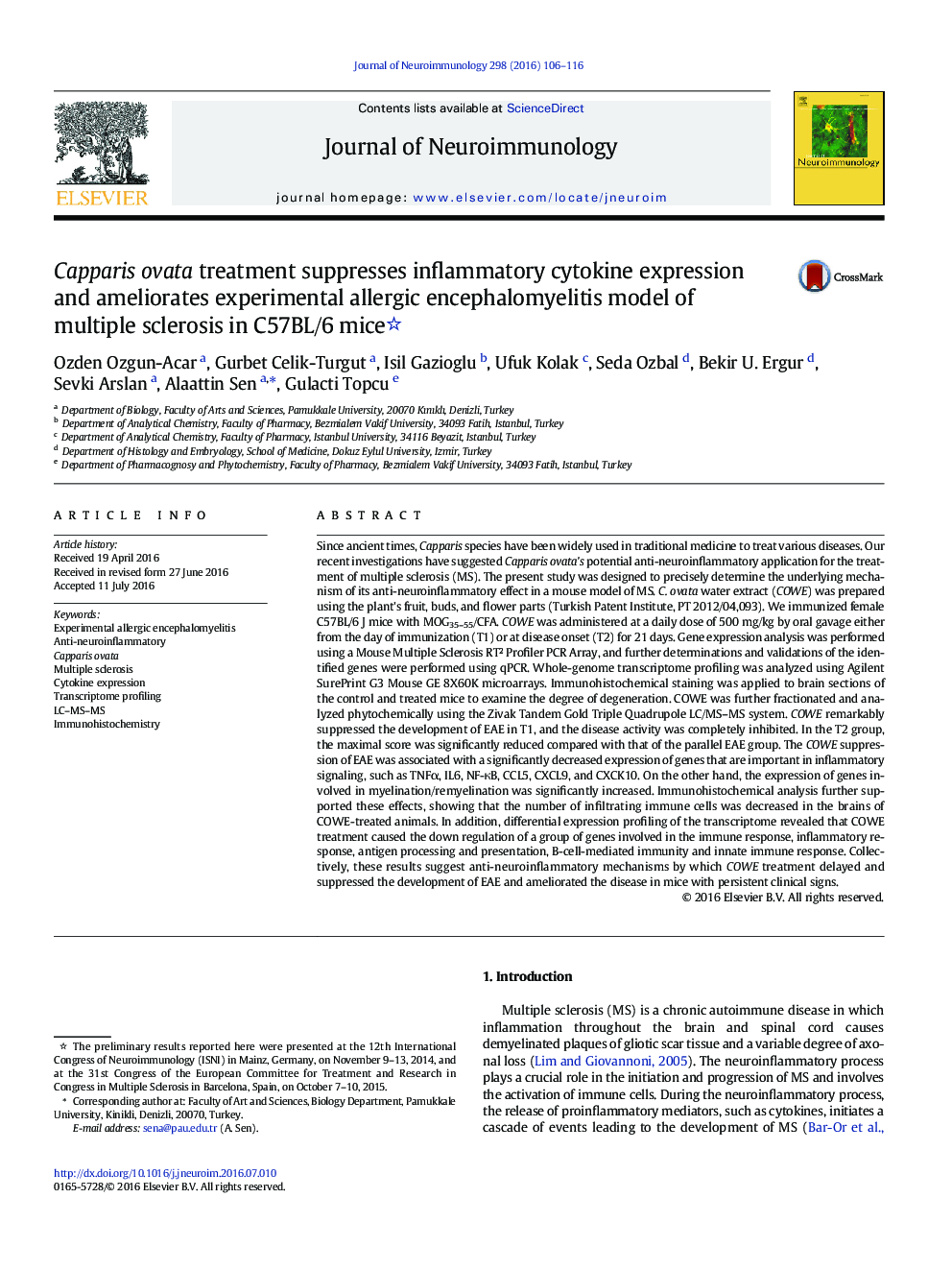| کد مقاله | کد نشریه | سال انتشار | مقاله انگلیسی | نسخه تمام متن |
|---|---|---|---|---|
| 3063817 | 1580377 | 2016 | 11 صفحه PDF | دانلود رایگان |

• Suppresses the expression of inflammatory genes that are associated with MS
• Induces the expression of genes that are involved in myelination/remyelination
• Does not elicit any significant side effects
• Was further fractionated (sub‐extracts) and the major phenolic content was determined.
• The anti-inflammatory action of Capparis ovata was found to be not related with its major phenolic content.
• Could be a valuable and safe alternative and complementary agent for MS
Since ancient times, Capparis species have been widely used in traditional medicine to treat various diseases. Our recent investigations have suggested Capparis ovata's potential anti-neuroinflammatory application for the treatment of multiple sclerosis (MS). The present study was designed to precisely determine the underlying mechanism of its anti-neuroinflammatory effect in a mouse model of MS. C. ovata water extract (COWE) was prepared using the plant's fruit, buds, and flower parts (Turkish Patent Institute, PT 2012/04,093). We immunized female C57BL/6 J mice with MOG35–55/CFA. COWE was administered at a daily dose of 500 mg/kg by oral gavage either from the day of immunization (T1) or at disease onset (T2) for 21 days. Gene expression analysis was performed using a Mouse Multiple Sclerosis RT² Profiler PCR Array, and further determinations and validations of the identified genes were performed using qPCR. Whole-genome transcriptome profiling was analyzed using Agilent SurePrint G3 Mouse GE 8X60K microarrays. Immunohistochemical staining was applied to brain sections of the control and treated mice to examine the degree of degeneration. COWE was further fractionated and analyzed phytochemically using the Zivak Tandem Gold Triple Quadrupole LC/MS–MS system. COWE remarkably suppressed the development of EAE in T1, and the disease activity was completely inhibited. In the T2 group, the maximal score was significantly reduced compared with that of the parallel EAE group. The COWE suppression of EAE was associated with a significantly decreased expression of genes that are important in inflammatory signaling, such as TNFα, IL6, NF-κB, CCL5, CXCL9, and CXCK10. On the other hand, the expression of genes involved in myelination/remyelination was significantly increased. Immunohistochemical analysis further supported these effects, showing that the number of infiltrating immune cells was decreased in the brains of COWE-treated animals. In addition, differential expression profiling of the transcriptome revealed that COWE treatment caused the down regulation of a group of genes involved in the immune response, inflammatory response, antigen processing and presentation, B-cell-mediated immunity and innate immune response. Collectively, these results suggest anti-neuroinflammatory mechanisms by which COWE treatment delayed and suppressed the development of EAE and ameliorated the disease in mice with persistent clinical signs.
Figure optionsDownload high-quality image (206 K)Download as PowerPoint slide
Journal: Journal of Neuroimmunology - Volume 298, 15 September 2016, Pages 106–116